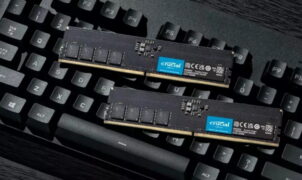TECH NEWS – After Nvidia DLSS and Intel XeSS, AMD is now moving in this direction with its next-generation FSR (FidelityFX Super Resolution).
Upscaling technology was part of the Turing architecture announced in 2018, which eventually became part of Nvidia’s DLSS. Then Intel got in on the act with XMX AI cores in its discrete graphics card architecture (Alchemist), so Intel XeSS takes a similar approach. But AMD hasn’t followed suit: the company has condemned the use of AI in scaling technologies and believes there are other ways to use AI.
Instead, AMD has made FSR more open on its older cards and even made it available on competing platforms (so you can turn on FSR 2 on an Nvidia or Intel card). The RDNA 2 and 3 cards have AI cores, but it looks like the company is getting in line and starting to use AI in its scaling technology as well: “2024 is a big year for us because we’ve spent so many years developing hardware and software capabilities for AI. We’ve just completed the AI enablement of our entire portfolio, so cloud, edge, PCs, our embedded devices, our gaming devices, we’re enabling our gaming devices to scale with AI and 2024 is really a huge deployment year for us, so now the foundation is there, the capabilities are there,” Mark Papermaster, AMD’s chief technical officer, told No Priors.
Papermaster spoke to No Priors, and for gaming devices, think not just Radeon graphics cards, but also Sony and Microsoft consoles (as Nintendo has pacted with Nvidia; the Switch at least has such foundations), and perhaps the next generation of consoles within those. Maybe not, and that will be in the news later today.
There is a downside to the need for AI-specific hardware: you need different hardware for different architectures. For example, only Nvidia’s GeForce RTX 4000 cards use DLSS 3…
Source: WCCFTech
















Leave a Reply